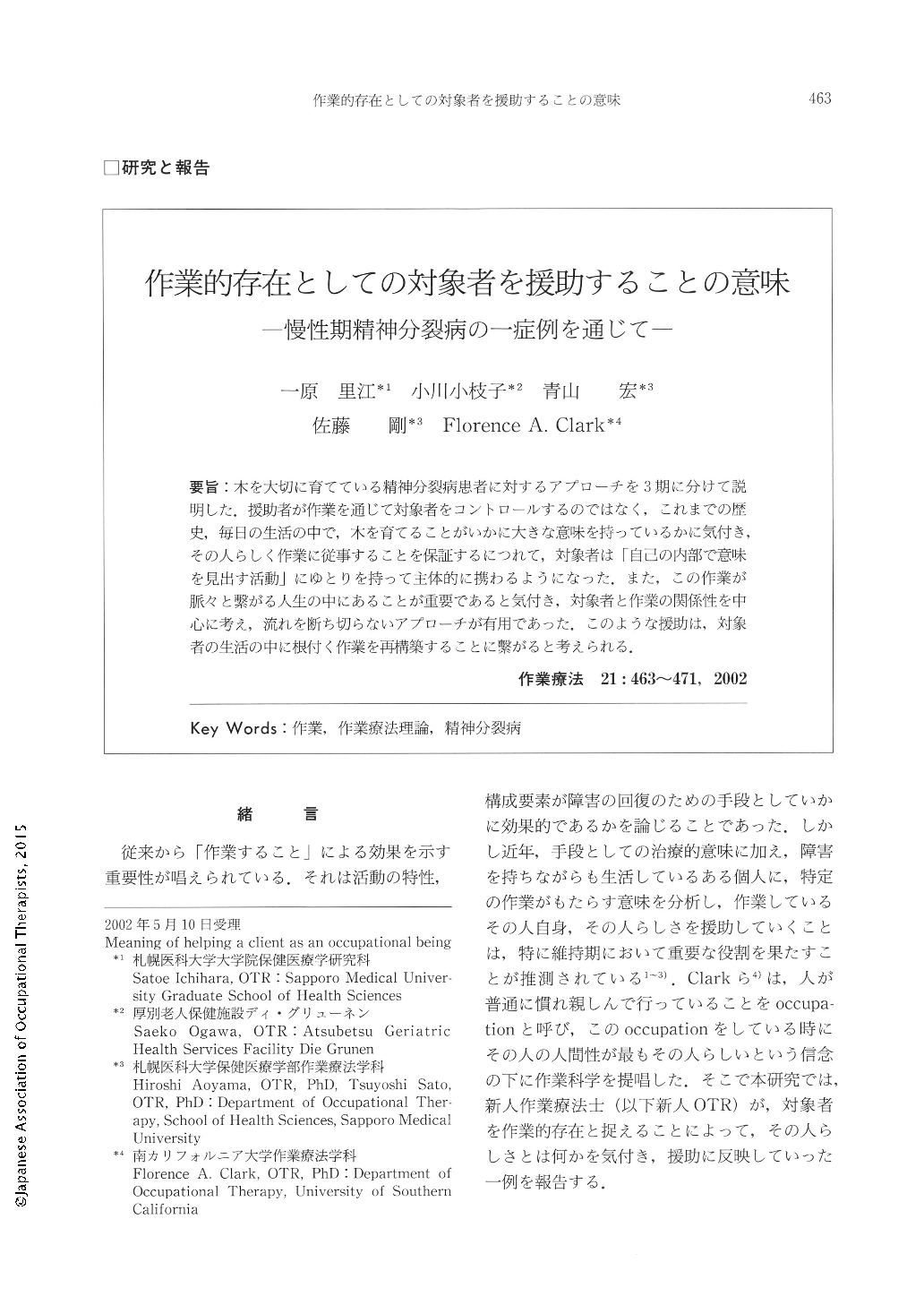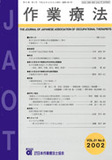Japanese
English
- 販売していません
- Abstract 文献概要
- 1ページ目 Look Inside
- 参考文献 Reference
- サイト内被引用 Cited by
要旨:木を大切に育てている精神分裂病患者に対するアプローチを3期に分けて説明した.援助者が作業を通じて対象者をコントロールするのではなく,これまでの歴史,毎日の生活の中で,木を育てることがいかに大きな意味を持っているかに気付き,その人らしく作業に従事することを保証するにつれて,対象者は「自己の内部で意味を見出す活動」にゆとりを持って主体的に携わるようになった.また,この作業が脈々と繋がる人生の中にあることが重要であると気付き,対象者と作業の関係性を中心に考え,流れを断ち切らないアプローチが有用であった.このような援助は,対象者の生活の中に根付く作業を再構築することに繋がると考えられる.
This paper purports to gain some insight on the efficacy of occupational therapy when a client is viewed as an occupational being. The client is a 60-years-old male and is diagnosed with chronic schizophrenia, having been hospitalized for 30 years. Most of the time, he refrains from communicating with anyone verbally. However, he did indicate an interest in Bonsai trees. His occupational therapist (first author) was just fresh out of school, and initially focused the therapy on his disability. However, also having been a graduate student of occupational therapy at Sapporo Medical University, the therapist's focus began to shift into one that reflected the client's life history and daily life. Through this rapport created by this focus, the patient became more willing to communicate with the therapist. The therapeutic process was analyzed by dividing the client's response into three periods. The patient's gradual change seems to indicate the importance of bringing out a client's spontaneous response by valuing his own occupation based on his life history, rather than aiming for some other goals through activities (medical model). It is concluded that the therapy helped the client achieve greater self-organization. This positive transformation seems to have occurred because the patient was able to engage in an occupation he loved naturally dash the therapist having focused on his occupation based on his life history.

Copyright © 2002, Japanese Association of Occupational Therapists. All rights reserved.


